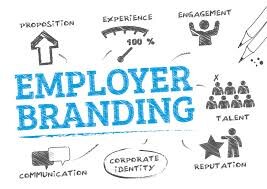Although most companies consider their branding when it relates to their customers and clients, the thought of employer branding might not be as much of a top priority. So, what’s the difference? While traditional branding relates to how an organization wants their customers and clients to perceive their products and services, employer branding focuses on how your company is viewed by potential and current employees. In a climate of competitive job searches, it’s important to consider how you want candidates to see your company.
Consider your organization’s value proposition.
Understanding what value you offer to an employee is a critical piece to employer branding. Your organization’s value proposition consists of multiple parts that have to all connect – mission and culture. We’ve written articles about creating a mission statement and cultivating culture – both can be used to better understand their importance within your organization while working towards creating your employer brand.
Reach out to current employees.
While working to understand what your value proposition is in relation to employer branding, consider your organization’s current employees. Their knowledge and experiences are key to seeing what your organization has done well for its employees and where the shortcomings exist that can be corrected. This could come in the form of small focus groups with employees or an organization wide survey. Allowing this conversation to occur (and be a continuous process) will allow for an evolving value proposition that will be reflected in your company culture.
Training and Coaching Employees.
When we say training, we don’t mean just onboarding. While onboarding is a critical part of training an employee and can be the first step to understanding employer branding, it’s not the only part of the process. Find opportunities to help your employees gain more knowledge and expertise during their career through professional development and understand the need for ongoing internal training and coaching. Through these processes, employees will connect more deeply with the company and leadership will have greater ability to influence their team toward mission, vision, and goals.
Source: https://blog.hubspot.com/marketing/employer-branding

